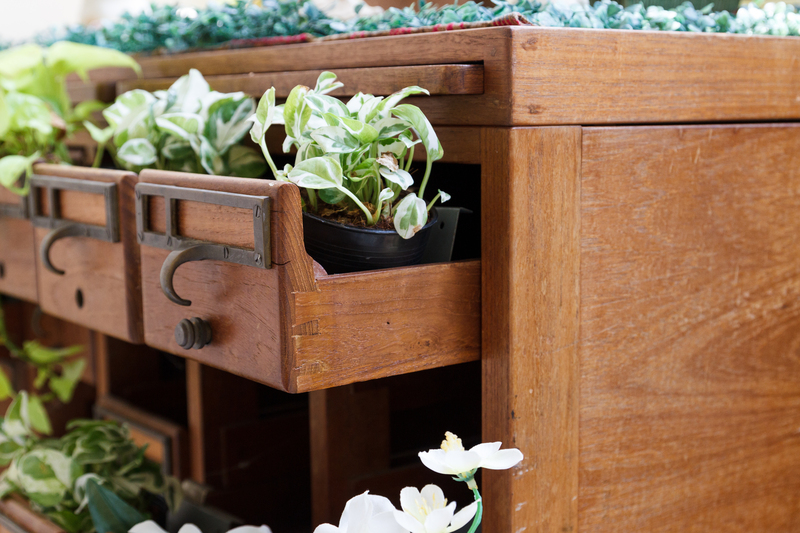Exploring the Purpose and Uses of a Builders Skip
Builders skips have become an essential feature of modern construction and renovation projects throughout the world. Whether you're tackling a large-scale construction site or embarking on home refurbishment, a builders skip provides a practical and efficient way to manage waste. In this comprehensive article, we'll dive deep into the purpose and uses of a builders skip, exploring its benefits, features, types, and best practices for hiring and using one effectively.

What is a Builders Skip?
A builders skip is a large, robust, open-topped waste container designed specifically for holding and transporting various types of waste materials from construction, demolition, or renovation projects. Skips are delivered, collected, and disposed of by licensed waste removal companies, making them a convenient solution for dealing with bulk waste. They're recognized by their trapezoidal shape, sturdy steel construction, and accessible design, which allows for easy loading of heavy and bulky materials.
The Typical Features of a Builders Skip
- Durable steel construction capable of handling rough, abrasive materials
- Large, open top for straightforward loading, even with wheelbarrows or small machinery
- Variety of sizes available, usually ranging from 6 cubic yards (standard builders skip) up to 8 or 12 yards for larger projects
- Safety reflectors and visible coloring for roadside use
- Sometimes equipped with drop-down doors for easier access
Why Do People Use Builders Skips?
The primary purpose of a builders skip is waste management - providing a safe, convenient, and legal way to dispose of large volumes of mixed construction and demolition debris. Here are some major uses of a builders skip in both domestic and commercial settings:
1. Construction Waste Removal
On building sites, a vast array of waste materials is generated. This includes bricks, concrete, timber, metals, and packaging, all of which must be safely and systematically removed to prevent hazards, maintain a tidy site, and comply with environmental regulations. A builders skip is the centerpiece of an effective waste management system, making it simple to collect and remove heavy and bulky waste.
2. Domestic Renovations and Home Improvements
From home extensions to kitchen refits, loft conversions, or landscaping, domestic jobs frequently produce more waste than homeowners anticipate. Renters and property owners use builders skips to handle everything from old fittings and fixtures to soil and masonry, decluttering spaces quickly and efficiently. A skip allows for all waste to be collected in one place, streamlining the clean-up and ensuring legal disposal.
3. Landscaping and Garden Clearance
Garden projects such as clearing overgrown areas, tree felling, or lawn relaying can create piles of green waste, soil, and rubbish. Rather than making multiple trips to the tip, a builders skip provides enough capacity to manage all types of garden waste, from tree branches to turf, stone, and old fencing.
4. Moving House or Decluttering
A builders skip is not just for construction sites. Many people hire skips for house clearances, downsizing, or decluttering, disposing of furniture, appliances, carpets, and general junk in one organized effort. With restrictions on what local recycling centers will accept, a builders skip makes large projects manageable and stress-free.
The Advantages of Using a Builders Skip
- Time and energy savings compared to multiple car or van trips to the local tip
- Improved safety by keeping waste contained and minimizing site hazards
- Environmental compliance through responsible waste processing and recycling
- Cost-effective for volume waste disposal projects
- Legal peace of mind, as licensed skip hire companies handle proper disposal
Environmental Impact and Compliance
Modern waste legislation, such as the UK Waste (England and Wales) Regulations, sets stringent requirements for the handling, recycling, and disposal of construction waste. Builders skips make compliance easier by ensuring waste is collected, separated, and processed by certified contractors. Many skip hire companies now operate recycling centers, ensuring that as much waste as possible is sorted and reused, diverting recyclable materials from landfill.
Types and Sizes of Builders Skips
One of the main reasons for the popularity of builders skips is the variety of sizes and types available, catering to every scale and scope of project:
Standard Builders Skip (6-8 Yard Skip)
- The most common size for both commercial and domestic jobs
- Capacity for 60-80 bin bags of waste
- Ideal for full kitchen/bathroom renovations, mid-size construction jobs, or garden clearances
Mini and Midi Skips (2-4 Yard)
- Smaller jobs with restricted space or lower volumes of waste
- Useful for bathroom refits, small garden projects, or home decluttering
Maxi and Roll-on Roll-off Skips (10-40 Yard)
- Large commercial sites and industrial waste management
- Can accommodate bulkier or heavier waste, such as soil, hardcore, or machinery parts
- Require special delivery lorries and clear access
Most Common Materials Disposed of in a Builders Skip
What can you throw in a builders skip? While regulations and guidelines may vary by region, the following are typically accepted materials:
- Bricks, tiles, and concrete rubble
- Timber and wood offcuts
- Metals (pipes, fittings, rebar)
- Plasterboard and drywall (in limited quantities)
- Soil and earth (check with skip hire for contamination rules)
- Non-electrical fixtures and fittings
- Green waste (branches, turf, plants)
- Household junk and general rubbish
What Can't You Put in a Builders Skip?
To ensure both legal and environmental compliance, there are specific restricted items:
- Asbestos
- Electrical appliances (fridges, TVs, computers, etc.)
- Hazardous chemicals (paint, solvents, batteries)
- Tyres
- Gas canisters
- Medical and biological waste
Always confirm with your skip hire provider for an up-to-date list of prohibited items.
How to Hire and Use a Builders Skip Effectively
Step 1: Assess Your Waste Volume and Type
- Estimate the space required for your renovation or construction waste
- Choose the correct size based on your needs and space at the site
- Consider the nature of your waste - if you have hazardous or electrical waste, separate disposal will be needed
Step 2: Arrange for Permits if Necessary
If your builders skip will be placed on a public road rather than private property, you may need a skip permit from your local council. Your skip hire company can often arrange this on your behalf, but always allow extra time for paperwork.
Step 3: Book Your Skip with a Licensed Provider
- Choose a company with licensed waste carrier status
- Check customer reviews and recycling credentials
- Confirm delivery and pickup times
Step 4: Load the Skip Safely
- Do not overfill - skips should be loaded no higher than the top edge for safe transport
- Distribute weight evenly to avoid instability
- Break down large items where possible to maximize space
- Place heavier items at the bottom and lighter, bulkier waste on top
Step 5: Collection and Responsible Disposal
When full, simply call your provider to schedule collection. Most skip hire companies now offer waste transfer notes detailing how your waste will be handled - ask for this for your records, especially for large-scale projects.
Skips vs. Other Waste Disposal Solutions
Some people may wonder, "Is a builders skip the right waste solution for my project?" Here we compare skips with alternative methods:
- Man-with-a-van services: Offer flexible pick-up but are often less cost-efficient for projects with ongoing or heavy waste generation
- Council bulk collection: Limited to specific item types, often with long wait times
- Tip runs using your own vehicle: Labour intensive, may not accept all waste types, and carries risks of vehicle damage or mess
- Builders skips: Versatile, legal, and safe for most project needs; a clear winner for major construction, renovation, or clearance jobs

Frequently Asked Questions About Builders Skips
Can I mix different types of waste in my builders skip?
Generally, you can mix most types of non-hazardous waste, but some companies offer special rates for "clean" loads like soil or rubble. Always check with your skip provider about local policies regarding waste segregation and recycling.
How long can I keep a builders skip?
Most standard hires are for 7-14 days, but extensions can be arranged. If you need the skip longer or anticipate delays, discuss this when booking to avoid extra charges.
Will I need to be present for delivery and collection?
Where possible, it's best to be on site, but many companies can deliver and collect skips as long as clear access and placement instructions are provided.
What if I overfill the skip?
For safety and transportation reasons, skips must not be filled above the rim. Overfilled skips may be refused for collection or incur additional charges, so always choose a larger size if in doubt.
Conclusion: The Enduring Value of Builders Skips
Builders skips remain a cornerstone of effective waste management for both domestic and commercial projects. Their ability to contain and dispose of bulky, heavy, and mixed waste not only keeps job sites safe and efficient but also supports responsible environmental practices. Whether you're managing a major development or a weekend DIY garden clearance, choosing the right builders skip size and provider will ensure your project runs smoothly from start to finish.
For anyone planning a construction, renovation, or major clear-out, hiring a builders skip is a hassle-free, practical investment that guarantees legal, safe, and eco-friendly disposal of your waste.
If you're ready to discover more about the purpose and uses of a builders skip or need expert advice on the best skip for your next project, contact your local skip hire experts today!